The Porsche 944 Story
The natural evolution of the 924 would be to equip it with a real Porsche engine. The base for the 944 engine design came from the aluminium V8 of the 928.
Full Story / Model Guides / Research & Data / Timeline & Evolution / Performance / Videos & Pics / News
The car was the brainchild of the newly appointed Peter Schutz, the CEO of the Porsche company. He decided to debut the new 944, which was the replacement for the 924, at the 24 Hours Le Mans race of 1981. The project was greenlighted in 1980, in response to dropping sales of the Porsche 924. Although it was basically a 924 with a proper Porsche engine, body styling and trim, the 944 looked like a more grown up car than the 924. Improvements over the out-going 924 were plain to see - beginning with the flared front and rear wheel arches. These became the trademark of the 944, and pulled in the buyers due to the butch stance and powerful presence they gave the car. Other differences were small but significant - on US models, the ugly 924 side reflectors were replaced with smooth, bumper-line examples. A rear spoiler, lining the lift-glass, made the rear-end look more functional and sporty. Drag coefficient was reduced to 0.35 over the 924, and the body panels were zinc-coated in all markets to prevent corrosion.
This Porsche 944 was fitted with the new 2.5 liter four cylinder engine derived from Porsche's V8. There were however many changes made in the transition from half V8 to new inline 4 cylinder. The four cylinder engine had been fitted with dual counter-rotating balance shafts after the original 1904 design by British engineer Frederick Lanchester and improved upon by Japanese car maker Mitsubishi. The 944 engine got improvements over the years, including turbocharging being added to get even more power from the unit for the 944 Turbo models.
The Porsche 944 was Porsche's largest-selling front-engined coupe.The launch of the 944 traded heavily upon the new car being a 'brand new Porsche model', in an attempt to bury the image of all front-engined Porsches not being 'real' Porsches - a fate which had befallen the 924. The car was released for sale to European markets in November 1981, with the UK getting their quota in April 1982, and the USA in May 1982. Sales of the base 944 coupe went through the roof, with a massive 26,800 944s being produced by the end of 1982. To put this figure into context, the entire Porsche company made just 28,000 cars in total in 1981. Before the Boxster and Macan, the 944 was heralded as the savior of Porsche - the massive cash reserves that this model made during the 1980s kept the company afloat (just) during the world recession of the early 1990s.
Several updates and models were released over the life of the 944 and while the 944 was intended to last into the 1990s, this plan didn't not happen. Major revisions planned for a 944 S3 model were eventually rolled into the Porsche 968 instead, which replaced the 944. The Porsche 944 was a successful model and was available as both a coupe and cabriolet in naturally aspirated and turbocharged forms. Even today, it is considered the best handling RWD (rear wheel drive) car of all time and if you can get your hands on one you won't be disappointed.
Manufacturer: Porsche AG / Production Years: 1982 - 1991 / Production: 173,238 units / Designer: Harm Lagaay / Body style: 2-door coupé, 2-door convertible / Layout: Front-engine, rear-wheel-drive / Engines: 2.5 L M44/40 Inline 4, 2.5 L M44/51 Inline 4, M44/52 turbo Inline 4, 2.7 L M44/12 Inline 4, 3.0 L M44/41 Inline 4 / Transmissions: 5-speed manual, 3-speed automatic / Dimensions: Wheelbase: 2,400 mm (94.5 in) / Premiere: Premiere: 1981 September 16, IAA Frankfurt Motor Show press day
Several limited and special edition Porsche 944s were made over the life of the model. There were a few race cars made, most importantly the Porsche 944 Turbo Cup cars for the series racing created for the 944. There was also the Celebration model in 1988 and the Turbo S model also from 1988. The final special edition 944 was the S2 SE, UK only special edition, of which only 15 were ever made. See below for all the details.
Below we take a look at the performance and specifications for the core production model Porsche 944s.
The is a lot more Porsche 944 research available. We have detailed Porsche 944 production numbers broken out by year and model. We also have Porsche 944 VIN numbers and ranges and a really cool diagnostics manual that a user created to help you find solutions to problems more easily.
Free to download Porsche 944 brochures. We have both sales brochures for the 944 as well as parts catalogs. The sales brochures give you a great look into how Porsche positioned the 944 in its sales materials. The parts catalogs are an invaluable tool for finding the information you need for replacements and DIY work.
Technical specs and performance numbers for every Porsche 944. In-depth detail you won't find anywhere else. From displacement to dimensions and everything in between, we have all the specifications you could ever want for your Porsche 944.
This graphic breaks out the Porsche 944 in terms of timelines and how to tell all the models apart. Click on the image to see it in higher definition. We have broken out the models by region, model and engine.
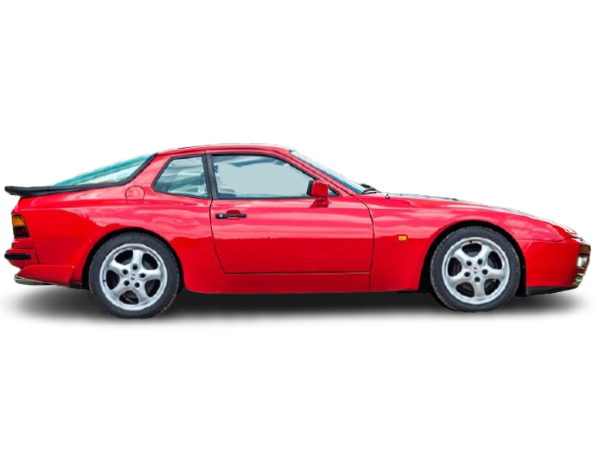

Porsche re-worked the 924 platform and abandoned the Audi engine, installing in its place a new all-alloy 2.5 litre straight-4 engine that was basically half of the Porsche 928‘s 5.0 litre V8. A four cylinder engine was chosen for fuel efficiency and size, because it had to be fitted from below on the Neckarsulm production line. Porsche introduced the 944 for MY 1982 to great anticipation. In addition to being slightly faster, the 944 was better equipped and more refined than the 924, it had better handling and stopping power and was more comfortable to drive. The car had nearly even front to rear weight distribution and this gave it very balanced, predictable handling at the limits. In mid-1985 the 944 underwent its first significant changes. These included : a new dash and door panels, embedded radio antenna, upgraded alternator, increased oil sump capacity, new front and rear cast alloy control arms and semi-trailing arms, larger fuel tank, optional heated and powered seats, Porsche HiFi sound system, and revisions in the mounting of the transaxle to reduce noise and vibration. For the 1987 model year, the 944 was updated to incorporate anti-lock braking and air bags for increased safety.
For the 1986 model year Porsche introduced the 944 Turbo, known internally as the 951 (952 for right-hand drive models). This had a turbocharged and intercooled version of the standard car’s engine. The turbo was the world’s first car using a ceramic portliner to retain exhaust gas temperature. The Turbo also featured several other changes, such as improved aero, a strengthened gearbox with a different final drive ratio, standard external oil coolers for both the engine and transmission, standard 16 inch wheels and a slightly stiffer suspension to handle the extra weight. Major engine component revisions, more than thirty in all, were made to the 951 to compensate for increased internal loads and heat. In 1988, Porsche introduced the Turbo S option package with a more powerful engine. In 1989 the ‘S’ designation was dropped and all 944 Turbos featured the ‘S’ package as standard.
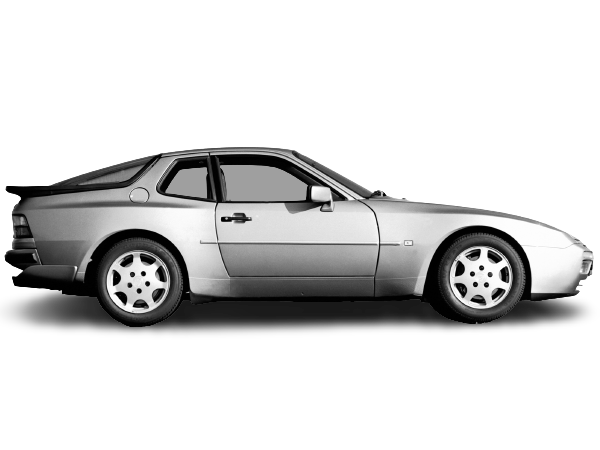

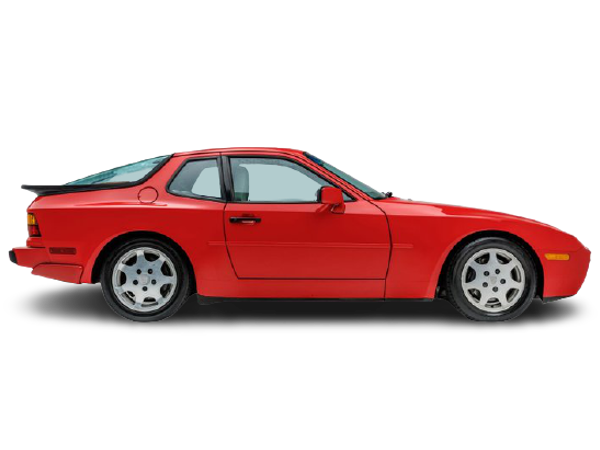

In 1987 Porsche debuted the 944 S, the “S” standing for “Super”. It looked sportier than its non-S version and had substantial modifications to both the interior and the engine and offered more performance to Porsche customers. This “Super” Porsche 944 was fitted with a more high performance version of the naturally aspirated four cylinder engine. The 2.5-liter inline-four engine fitted with 4-valves/cylinder technology. It offered more power and torque than the regular, 2-valves/ cylinder ones. The 2.5 L engine (M44/40) featuring a self-adjusting timing belt tensioner and this marked the first use of four-valves-per-cylinder heads and DOHC in the 944, derived from the 928 S4 featuring a redesigned camshaft drive, a magnesium intake tract/passages, magnesium valve cover, larger capacity oil sump, and revised exhaust system. The revised Motronic 2 engine management system featured dual knock sensors for improved fuel performance for the higher 10.9:1 compression ratio cylinder head.
In 1989 Porsche 944S2 was introduced, and powered by a 211 PS (155 kW; 208 hp) 3.0 L engine, bore 104mm, stroke 88mm, the largest production 4 cylinder engine of its time. The 944S2 had the same rounded nose and a rear valance found on the Turbo model. This was the first example of the use of an integrated front bumper, where the fender & hood profiles would merge smoothly with the bumper…a design feature that has only now seen widespread adoption on nearly all cars. The S2 was also available as a cabriolet, a first for the 944 line. Performance was quoted as 0-60 mph in 6.6 seconds (0–100 km/h 6.8 s), with a top speed of 240 km/h (150 mph) (manual transmission). The 944S2 also received a revised transmission and gearing to better suit the 3.0 liter powerplant.
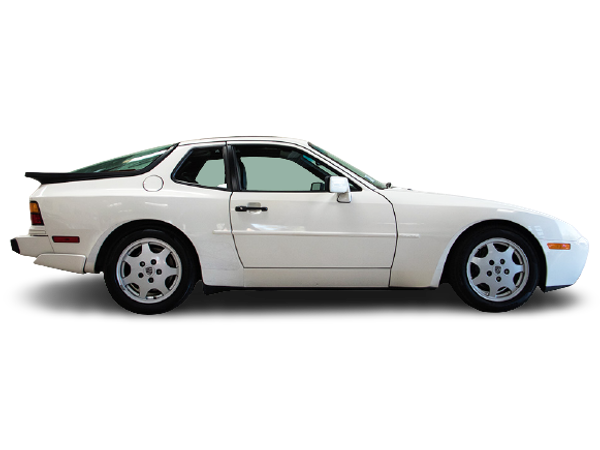

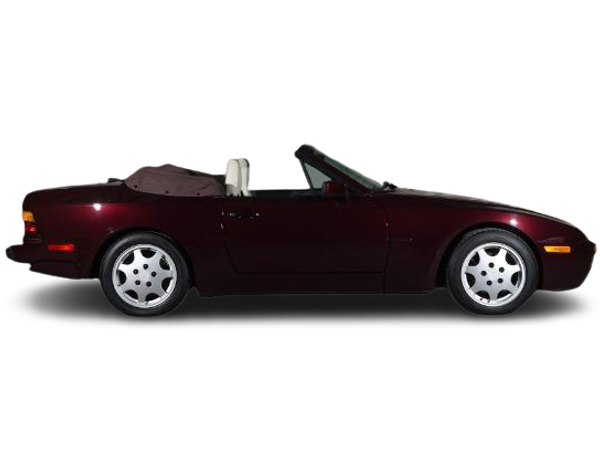

In 1989, Porsche introduced the 944 S2 Cabriolet, the first 944 to feature a convertible body style. The contract to build Porsche’s 944 S2 Cabriolet was awarded to ASC (American Sunroof Company) in Weinsberg, Germany. The S2 Cabriolet was a very complicated build, where 944 coupe bodies were taken off the assembly line at Neckarsulm, Germany and then delivered to ASC in Weinsberg, Germany. At ASC, reinforcement plates are welded in the front end of the car and floor plate area to give the body the amount of torsional strength and crash safety required for the convertible.
Recent auctions, awesome review videos and all the latest news and posts regarding anything to do with the Porsche 944.
Join Our Porsche Community
Sign up for our weekly Porsche newsletter. The latest Porsche news, rumors, reviews and more delivered to your inbox. Cool Porsche stuff perfect for the flat-six obsessed.